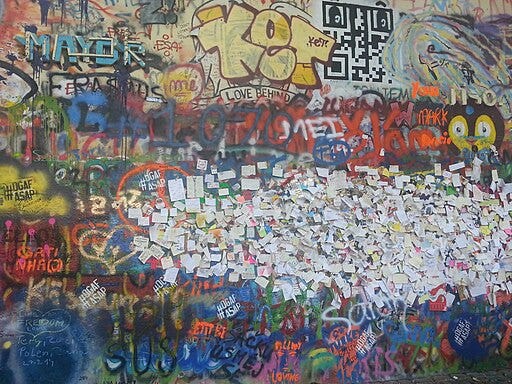Wonder Why the Movement Against Trumpism Feels So Fragile? There's a Void Where Its Heart Should Be
Here are three ways we can start building a culture of resistance now.

Outrage is a powerful spark, but it burns out fast. To truly resist authoritarianism, we need something deeper—a culture of resistance.
Most democratic movements don’t fail because of government repression or lack of support. They unravel from within—undermined by emotional exhaustion, disillusionment, and insufficient collective spirit.
Movements that endure—like the Civil Rights Movement, the Solidarity movement in Poland, and the anti-apartheid struggle in South Africa—aren’t just politically strategic. They are emotionally sustainable.
What Is a Culture of Resistance?
Fighting oppression is one of the hardest things we can do. It demands time, energy, and sacrifice while offering little immediate reward. The work is grueling, the progress often invisible, and burnout is likely—unless we create a culture that sustains us.
A culture of resistance helps us:
✅ Find belonging: Knowing you are not alone makes hardship easier to endure.
✅ Stay hopeful: Music, art, and storytelling inspire and remind us that change is possible.
✅ Make sacrifice meaningful: Loss becomes bearable when tied to a greater purpose.
✅ Process negative emotions: There will be many setbacks along the path to success.
✅ Support one another: Encouragement and validation revitalize us when our spirit flags.
How the Civil Rights Movement Built a Culture of Resistance
The Civil Rights Movement is a good example of how culture helps people sustain activism despite hardship.
🔹 Belonging – Black churches and grassroots organizations were more than meeting places; they built a deep sense of community.
🔹 Hope – Freedom songs like We Shall Overcome and Dr. King’s speeches reinforced the belief that justice was not just possible but inevitable.
🔹 Meaningful Sacrifice – The suffering of people who were arrested, beaten, or killed was not in vain, but in service of the struggle.
🔹 Emotional Expression – Churches provided safe spaces for activists to grieve, vent frustration, and process trauma together.
🔹 Encouragement and Support – Leaders and fellow activists uplifted one another through gatherings, letters, and speeches.
The Civil Rights Movement didn’t just demand change—it built a culture that could sustain the fight for the long haul.
The Cultural Vacuum in Today’s Activism
Today’s pro-democracy movement lacks the deep cultural foundation that sustained past struggles. Instead of strong communal traditions, shared artistic expression, and emotional support structures, much of modern activism is reactive—fueled by social media outrage, quick mobilization, and fleeting engagement.
Key signs of this cultural vacuum include:
❌ Isolation Instead of Belonging – Unlike the Civil Rights Movement, which had community hubs, today’s activism is scattered across online spaces, often making it feel lonely and unsustainable.
❌ Forgettable Messages Instead of Shared Symbols and Stories—Past movements had defining symbols like the raised fist, freedom songs, or iconic speeches that united people. Today’s democracy movement lacks recognizable imagery, chants, or stories to bring participants together.
❌ Burnout Instead of Emotional Support – Activists today face immense frustration, but unlike past movements that provided spaces for collective grieving and renewal, there are few structured ways to process emotional exhaustion. Without shared rituals of resilience, many burn out and disengage.
❌ Transactional Activism Instead of Social Reinforcement – Participation in today’s democracy movement often feels like signing petitions, attending protests, or sharing content online—actions that require little ongoing engagement. Without strong communities or personal ties reinforcing activism, many people move on after brief involvement.
❌ Cynicism Instead of a Vision for the Future – While past movements inspired hope with visions of a better society, today’s democracy movement is defined more by resistance to threats than by a compelling alternative. Without a clear, emotionally resonant vision, many activists feel disillusioned and powerless rather than energized
To build a lasting movement, we must integrate culture into activism. That means fostering artistic expression, building community traditions, and creating emotionally supportive spaces where activists can connect, reflect, and recharge.
How Can We Build a Culture of Resistance?
Here are three concrete ideas for how we can begin building a culture of resistance today.
1. Lights for Democracy
Rituals are an essential element of political movements. They provide emotional expression, give us a sense of control, and remind us that we are part of something bigger than ourselves. That’s why I propose a nightly ritual: Lights for Democracy.
How It Works
Every night at 8:00 PM local time, people across the country turn on dedicated exterior lights, place a safety candle in their window, shine a flashlight, or illuminate a building in blue. This is a simple but powerful act of hope, vigilance, and solidarity in defense of democracy.
Why It Works
Visible
Emotionally Evocative
Inclusive
Potentially Viral
Attractive to Media
2. Support Circles for Democracy
Citizens fighting for democracy often face burnout, frustration, and despair. To sustain long-term engagement, I propose Support Circles for Democracy—online or in-person spaces where people can connect, process, and recharge together.
How It Works
Support Circles for Democracy can start small—local groups, existing activist communities, or even informal gatherings among friends. Over time, they can expand into a national network with trained facilitators and partnerships with pro-democracy organizations.
Why It Works
These virtual or in-person gatherings, held weekly or daily, would provide a space for participants to:
Share experiences
Process emotions constructively
Find encouragement and hope
Channel negative feelings into productive action

3. Democracy Walls
Throughout history, public spaces have been a site of resistance against authoritarianism. Streets, walls, billboards, and fences can be excellent platforms for expression, solidarity, and defiance. That’s why I propose we create Democracy Walls to defeat authoritarianism in the U.S.
How It Works
In communities across the country, we designate physical or digital walls where people can write, draw, paint, or post messages about what democracy means to them. These could be:
Chalkboard walls in town squares where people contribute thoughts each day.
Temporary murals that evolve over time, reflecting the movement’s energy.
Online Democracy Walls, where people share digital messages, artwork, and videos.
Post-it walls at libraries, coffee shops, and community centers—anywhere people gather.
A Tradition of Resistance
Public art has long been a form of creative defiance:
The Lennon Wall in Prague became a symbol of peaceful resistance against communism.
The Democracy Wall in Beijing was used by Chinese dissidents to demand political reform.
Hong Kong’s Democracy Walls were used by university students to demand political rights
Now, we reclaim this tradition. As democracy is threatened, we cover our public spaces with words, images, and ideas that cannot be erased.
Why It Works
Easy
Inclusive
Visible
Potentially Viral
Attractive to Media
Let’s Get Started
If you’re concerned that the movement against authoritarianism is too fragile to succeed, you’re right to be worried. Without a culture of resistance, we are in danger of burning out before we ever truly get started.
Picture a diya, the small oil lamps lit during festivals and rituals across many cultures. In some traditions, diyas are not lit individually; instead, one flame ignites the next, passing light from wick to wick. The fire doesn’t weaken as it spreads—it grows.
This is exactly what culture does for movements. It keeps the light alive, ensuring that no one burns alone.
Let’s spread the flame so the light of resistance burns bright until authoritarianism is defeated.









The Civil Rights Movement involved active training. There are still many silos. Can Indivisible, The Third Act, etc. work together? Many see enemies and use shame and blame which only increases the divide. I wish Smart Politics could train members of these groups. We need to see the humanity in everyone. I receive hope from the saying, “ The true meaning of life is to plant trees, under whose shade you do not expect to sit.” Nelson Henderson A culture of being active to sustain our democracy and our natural environment is needed with the understanding that we not give up if we don’t get immediate results.
I recognize a lot of what is said here in my local community. But my local community is one rooted in liberal tradition and the culture is founded on the '60s tradition of community activism. I feel for people who are in places where such values aren't fundamental to the community's culture. In the last month or two, everything that was stated above has been happening in my community, and it is truly effective. For people who live in places without these aspects embedded in their culture, all I can say is it is important to realize that they actually work. Just getting together with like-minded people on a regular basis, physically together in a room, makes everything better.